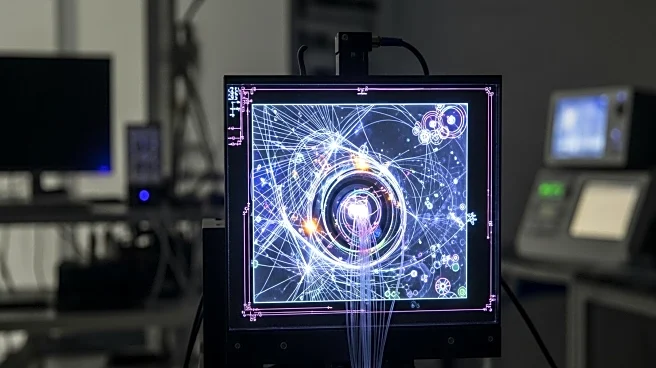What is the story about?
What's Happening?
Researchers have developed a tunable Metafiber that allows for precise control of light focus using a 3D nanoprinted hologram on the end face of a dual-core fiber. This innovation, led by Professor Markus A. Schmidt, enables remote focus control by adjusting the relative power between the fiber's guided modes. The hologram is sensitive to changes in the interference pattern of light emitted from each core, allowing for a shift in the focal spot's position without moving parts. This approach offers compact, robust, and fast tunable focusing, advancing the field of reconfigurable photonics.
Why It's Important?
The ability to precisely control light focus using fiber-integrated holograms has significant implications for various applications, including microscopy, laser surgery, and telecommunications. This technology could lead to more efficient and compact optical systems, enhancing capabilities in high-speed optical trapping, minimally invasive diagnostics, and improved signal routing. The Metafiber's tunability through power modulation offers a faster and more reliable method than traditional approaches, making it ideal for rapid implementation in both research and industrial settings.
What's Next?
The study opens avenues for developing next-generation fiber-based optical systems, with potential applications in medical technology and telecommunications. Researchers may explore further integration of this technology into existing systems, aiming to enhance performance and functionality. The advancement could lead to new devices and systems that leverage the unique properties of fiber-integrated holograms.
Beyond the Headlines
The development of fiber-integrated holograms may raise ethical considerations regarding the use of advanced optical technologies in medical and communication fields. As the technology becomes more widespread, there may be discussions about data privacy and security, particularly in applications involving sensitive information.
AI Generated Content
Do you find this article useful?











